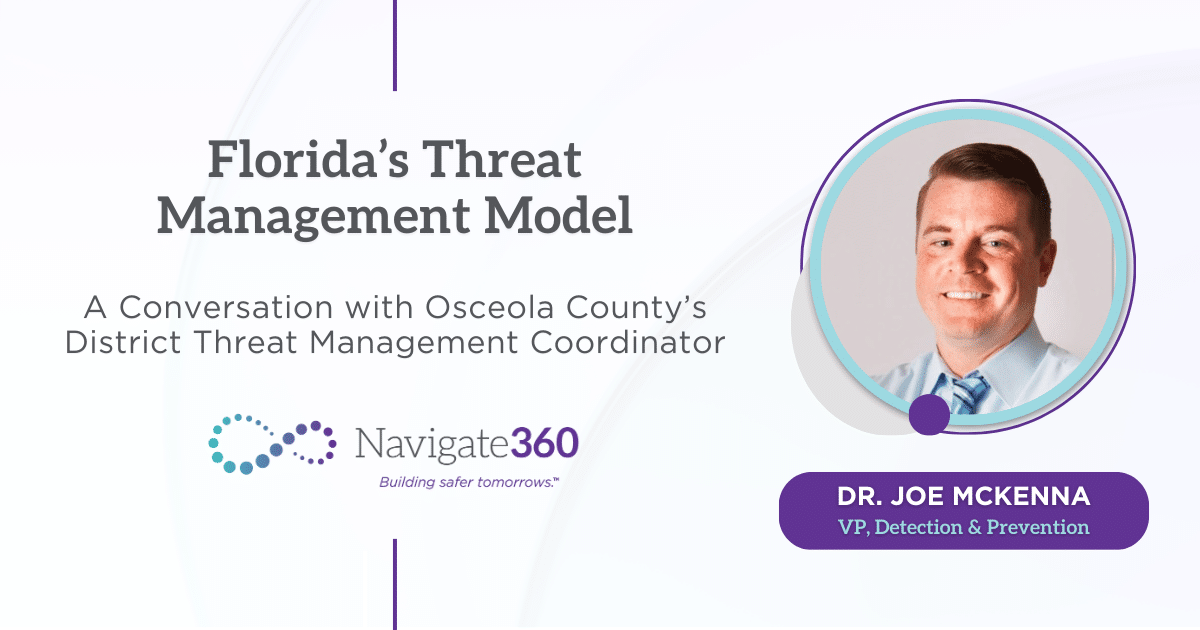Nearly 7 in 10 employees say the COVID-19 pandemic has resulted in the most stressful time of their career. Employees carry that stress with them to work, and if left unchecked, it can turn into threatening behavior in the form of bullying, harassment and violence that puts others (and the business) in danger.
Certain behaviors serve as warning signs or “red flags” that suggest violence might be right around the corner. You can empower employees to recognize and address these red flags and avoid violence in your workplace.
The Importance of Proactivity
Proactivity is key to preventing workplace violence. The sooner you know that someone is headed down the wrong path, the sooner you can intervene. Your organization’s leaders can take the following steps to prevent violence in the workplace:
- Complete background checks on new employees to rule out recent violent convictions.
- Establish a strict anti-violence policy that prevents harassment.
- Manage visitor activity and provide security monitoring.
These are critical efforts, but employees need special training to recognize and address stress in their peers as well. Proactive harassment and bullying training can help your company avoid potentially dangerous situations by referring troubled employees to the help they need.
Identifying Threats in the Workplace
Behavioral Threat Assessment (BTA) is key to creating a culture of safety, respect and emotional support. Threat assessment helps to identify early indicators of violence and keeps employees on a safe and productive path. Individuals from various departments and levels within your organization can join forces to develop effective BTA strategies that ensure diverse points of view and broad access to information and resources. BTA teams also streamline the assessment process by implementing policies and procedures that make team members aware of their own roles and responsibilities as well as those of their colleagues.
Creating a successful BTA team also involves:
- defining what constitutes prohibited and concerning behaviors so it’s clear what warrants immediate intervention and/or termination;
- meeting regularly to share insights, especially when a serious threat arises; and
- creating a central reporting mechanism for employees to provide detailed, confidential information about the behaviors they witness.
BTA Objectives
When performing any assessment, your BTA team should be able to answer the following questions. Is a person’s behavior consistent with that which may cause an attack or other violent action? Is the person’s current setting conducive to targeted violent behavior?
The connection between stress and mental health in violent attackers is uncomfortably similar to that which we’re observing during today’s pandemic. Unemployment, gun sales and divorce rates have spiked, and rarely do these situational stressors come together as they have in the past several months.
Add these personal stressors to everyday office issues (understaffing, inadequate security, favoritism, etc.) and you have a perfect scenario in which employees may become aggressive and lash out. These are behaviors to watch for, as they may serve as indicators for potential future violence:
- Excessive alcohol or drug use
- Unexplained absenteeism or a decline in job performance
- Depression, withdrawal or suicidal comments
- Resistance to changes at work
- Persistent complaining about perceived unfair treatment
Proven Models
Using proven methodology, BTA teams can recognize concerning behavior, connect the dots with educated assumptions and formulate plans that support individuals in a positive, nonjudgmental manner. Combined with additional support strategies, such intervention can decrease absenteeism and promote a safer, stronger work environment.
The National Threat Assessment Center (NTAC) offers a reputable methodology that can guide your team through screening cases, gathering information and analyzing resulting data. NTAC uses U.S. Secret Service guidelines for threat assessment, including 11 questions that aim to identify, investigate and manage individuals of concern.
The Comprehensive School Threat Assessment Guidelines (CSTAG) model provides a research-based prescriptive process that can assess and address mental health before any action is taken. Although CSTAG was created for schools, the same concepts can be used in corporate threat assessment as well.
Mental Health Matters
Make regular efforts to educate employees about the importance of mental health and overall well-being. Share mental-health resources and connect employees with the local services their health plans or Employee Assistance Programs (EAPs) provide. Encourage colleagues to support one another by sharing personal experiences. This can help to eliminate the stigma surrounding mental and emotional challenges.
Threat Assessment and Human Resources
Threat assessment and related employee training initiatives are essential for a successful Human Resources program (and for business in general). Training employees to identify threatening behavior shows that the organization places a high priority on safety. When intervention is achieved before violence occurs, organizations can avoid high turnover and low morale, both of which affect the bottom line. This is critical at a time when many people are feeling anxious and uncertain about their futures.
A well-trained workplace is a confident workplace. Knowing how to identify, monitor and prevent threats and related dangerous behaviors can make your company a safe place for all employees. Learn more about how Navigate360 can help you improve your safety initiatives today to build confidence in your workplace tomorrow.



